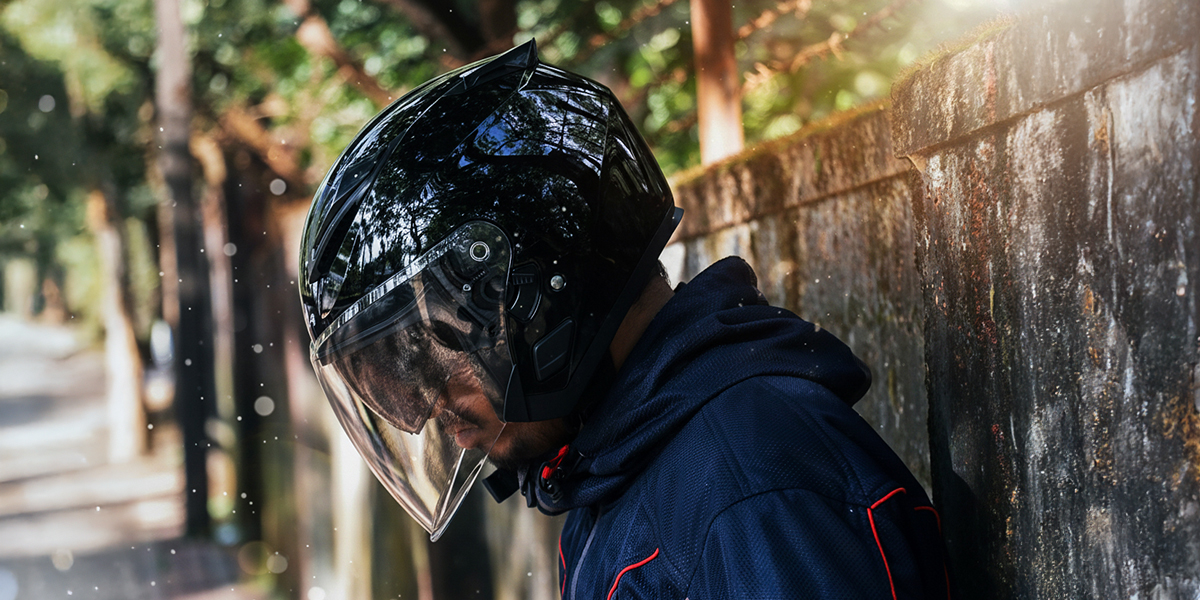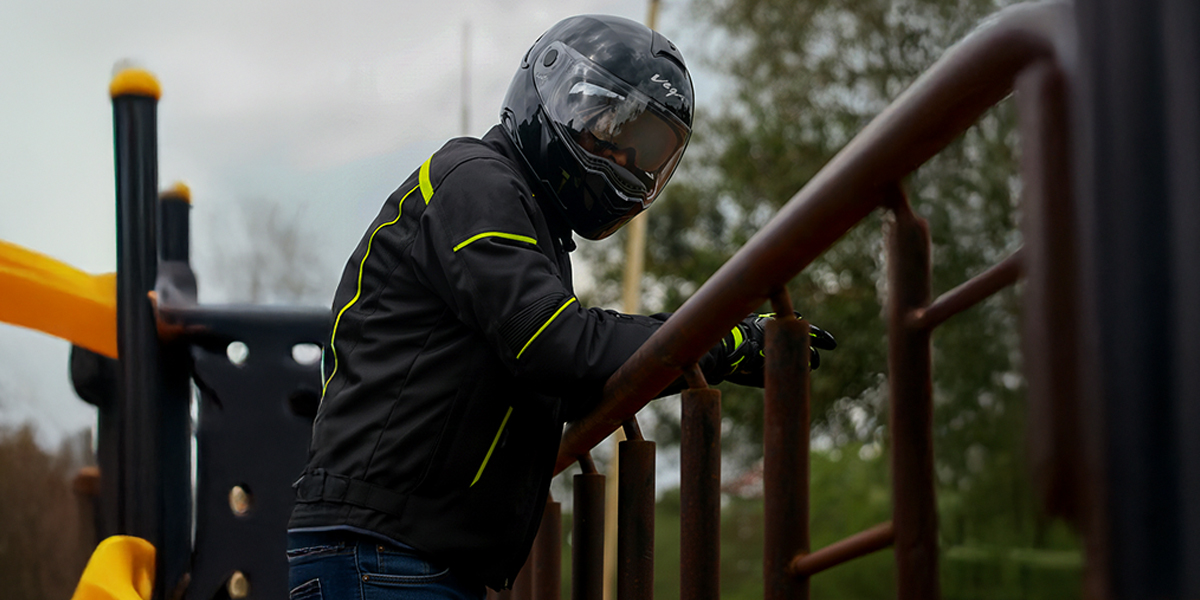
How Lightweight Helmets Improve Rider Comfort
- -
A lightweight helmet makes riding much more comfortable, which helps riders stay focused and less tired. Read more to learn how innovative materials and the right weight distribution can make a helmet truly comfortable, which will make your ride safer.
Introduction
Safety and comfort are important for all motorcyclists. Even though it offers you additional protection, a heavy helmet might hurt your neck, increase fatigue, and make it hard to concentrate. This is where the new lightweight helmet India has transformed how people ride. These helmets don’t put safety at risk, instead, they use the latest materials and innovation to protect you well without being too hefty. This blog will talk about the science behind what makes a helmet really comfortable. It will discuss the pros of a lighter helmet, how weight distribution works, and how lightweight helmets achieve the proper mix between comfort and performance.
Table of Contents
- Science of Lightweight Helmets
- Benefits of Lightweight Helmets
- Comfort from Weight Distribution
- Balancing Performance and Weight
- Conclusion
- FAQs
Science of Lightweight Helmets
Building a lightweight helmet in India shows that engineering and materials science are very advanced. To lose a lot of weight while retaining or even boosting protective abilities, you have to do a lot of research on composite materials and follow strict production techniques. This is quite vital for developing a helmet that is very comfortable and that motorcyclists can wear for a long period without feeling tired.
- Advanced Composite Materials: Modern helmets that are light often have shells made of carbon fibre, fibreglass, or a blend of these materials. These materials are very strong for their weight, which means they can withstand a lot of damage without adding weight.
- Optimised Shell Construction: Engineers use complex stacking techniques and resin systems to build shells that are both incredibly strong and very light. This means meticulously lining up the fibres and curing them so that the material’s natural properties work best.
- Multi-Density EPS Liners: The inner Expanded Polystyrene (EPS) liner is highly crucial for absorbing shock in multi-density EPS liners. Some lightweight helmets contain multi-density EPS, which means that the helmet is made of varying densities in different areas.
- Computational Design and Testing: To determine the best shell designs, manufacturers use contemporary computational fluid dynamics (CFD) and finite element analysis (FEA) to model impacts.
Benefits of Lightweight Helmets
There are several reasons to choose a lightweight helmet in India, and comfort is just one of them. They make riding a bike safer and more entertaining. A rider’s head feels less weight on it, which relieves a lot of physical strains and makes them more focused and able to go longer and makes the helmet quite comfortable.
- Reduced Neck and Shoulder Fatigue: The rider’s neck and shoulder muscles wouldnt be put under much stress, which is the most essential and immediate advantage. This means you can ride for longer without getting tired, which is something that happens a lot with heavier helmets.
- Better Endurance on Long Rides: When riders aren’t as weary, they can stay focused for longer periods of time. This is especially significant when they are going on a long ride. A lightweight helmet makes you feel less tired.
- Enhanced Rider Concentration: When the heavy helmet isn’t affecting the rider as much, they can concentrate on the road, traffic, and changing circumstances. This improves focus makes riding a bike safer right away.
- Better Head Movement and Peripheral Vision: A lighter helmet makes it easier and faster to tilt your head, which increases your peripheral vision and awareness of what’s going on around you.
Find the ideal lightweight helmet in India that redefines what a truly comfortable helmet feels like.
Comfort from Weight Distribution
It’s crucial for comfort that the weight of the helmet is distributed evenly. A lightweight helmet that is perfectly balanced makes sure that there are no pressure points and puts even less strain on the rider’s neck and shoulders.
- Centralised Balance Point: The centre of gravity of a high-quality, lightweight helmet is as near as feasible to where the rider’s head naturally balances. This makes it harder for the weight of the helmet to move.
- Prevention of Tipping/Pulling: A helmet can feel like it’s pushed forward, backwards, or to the sides when the weight isn’t equally distributed, especially when you brake or speed up. When you strike the correct balance, this uncomfortable feeling is absent.
- Less Rotational Tension: An unbalanced helmet can create tension on the neck when you move quickly or when the wind blows. The optimal weight distribution lowers these stresses, which makes it safer and more comfortable overall.
- Interior Design: The shell has a cushioning and liner system that keeps the head in place and evenly distributes pressure. This makes the helmet quite comfortable, in addition to being light.
Balancing Performance and Weight
The hardest part of developing a lightweight helmet in India is figuring out how to balance low weight with strong safety performance. Manufacturers work hard to establish this balance by rigorously testing their products and coming up with new designs that keep a helmet comfortable while also protecting the wearer.
- Meeting Safety Certifications: Even though they are lighter, all decent lightweight helmets must nevertheless meet demanding international safety standards like ISI, DOT, and ECE. They are strong enough to withstand hits and keep people out.
- Material Strength vs. Thickness: With advanced materials like carbon fibre, it is possible to construct shells that are thinner and lighter yet still quite robust. These shells protect you just as well, if not better, than thicker, heavier shells made from less modern materials.
- Aerodynamic Efficiency: The form of a helmet is particularly crucial for keeping it stable at high speeds and making it easier for the wind to pass through. Lightweight helmets often feature forms that are streamlined and fit well with their lighter weight. This makes them work better overall.
- Ventilation Integration: Built-in ventilation systems that perform properly don’t hurt the shell or add too much weight. Air may flow through strategically positioned vents and channels, which keeps the helmet’s construction intact.
Discover your perfect comfortable helmet from our range of advanced lightweight helmet India.
Conclusion
The lightweight helmet is a huge step forward in making motorcycle riders safer and more comfortable. These helmets are a great solution to the prevalent problem of rider fatigue caused by heavy helmets. They do this by carefully combining advanced materials science with smart design. The benefits, which include reduced strain on the neck, more stamina, better focus, and more head movement, all make riding a lot more pleasurable and safe. Every kilometre is worth the money you spend on a helmet that fits well, is light, and has the finest weight distribution.
Browse Vega Auto‘s collection of lightweight helmets, engineered for superior comfort and safety.
FAQs
1. Does a lightweight helmet compromise on safety?
No, modern lightweight helmets use advanced materials and engineering to meet or exceed safety standards without added bulk.
2. What materials are typically used to make a comfortable, lightweight helmet?
Carbon fibre, fibreglass, and multi-composite blends are commonly used for their high strength-to-weight ratio.
3. How does a lightweight helmet reduce neck strain?
By reducing the overall mass and optimising weight distribution, it lessens the load and leverage on the neck and shoulder muscles.
4. Is a lighter helmet always better for long rides?
Yes, a lighter helmet significantly reduces rider fatigue and discomfort over extended periods, improving concentration.
5. What is multi-density EPS in a comfortable helmet?
It’s an inner foam liner with varying densities to absorb different impact energies more effectively across the helmet.






